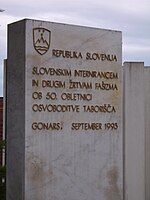Palmanova
1593 establishments in ItalyBorghi più belli d'ItaliaCities and towns in Friuli-Venezia GiuliaForts in ItalyMunicipalities of the Province of Udine ... and 2 more
Planned communities in ItalyStar forts

Palmanova (Friulian: Palme) is a town and comune (municipality) in the Regional decentralization entity of Udine in Friuli-Venezia Giulia, northeast Italy. The town is an example of a star fort of the late Renaissance, built up by the Venetian Republic in 1593. The fortifications were included in UNESCO's World Heritage Site list as part of Venetian Works of Defence between the 16th and 17th centuries: Stato da Terra – western Stato da Mar in 2017. Palmanova is one of I Borghi più belli d'Italia ("The most beautiful villages of Italy").
Excerpt from the Wikipedia article Palmanova (License: CC BY-SA 3.0, Authors, Images).Palmanova
Piazza Grande,
Geographical coordinates (GPS) Address Nearby Places Show on map
Geographical coordinates (GPS)
| Latitude | Longitude |
|---|---|
| N 45.905402777778 ° | E 13.309977777778 ° |
Address
Piazza Grande
Piazza Grande
33057
Friuli-Venezia Giulia, Italy
Open on Google Maps





